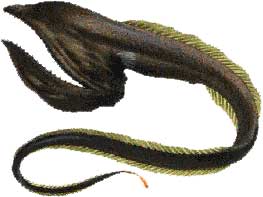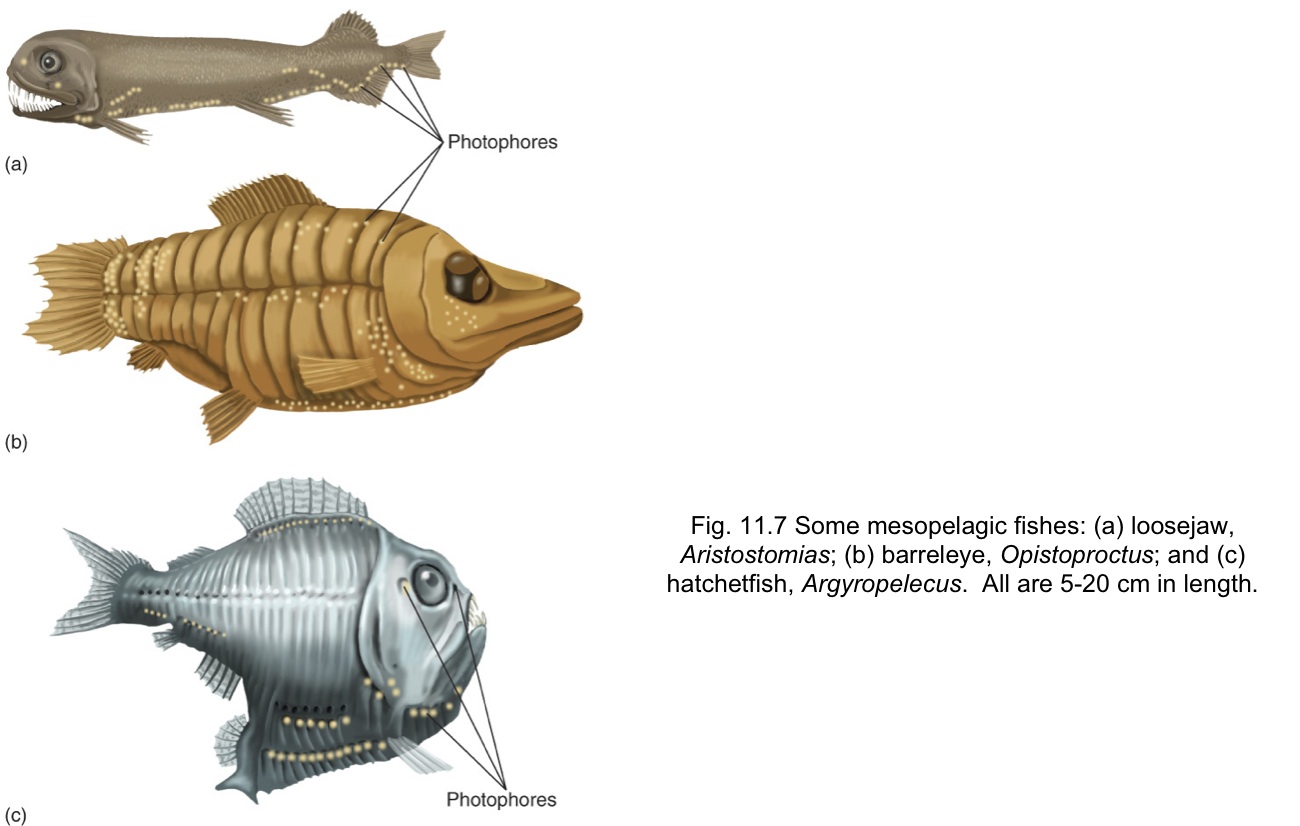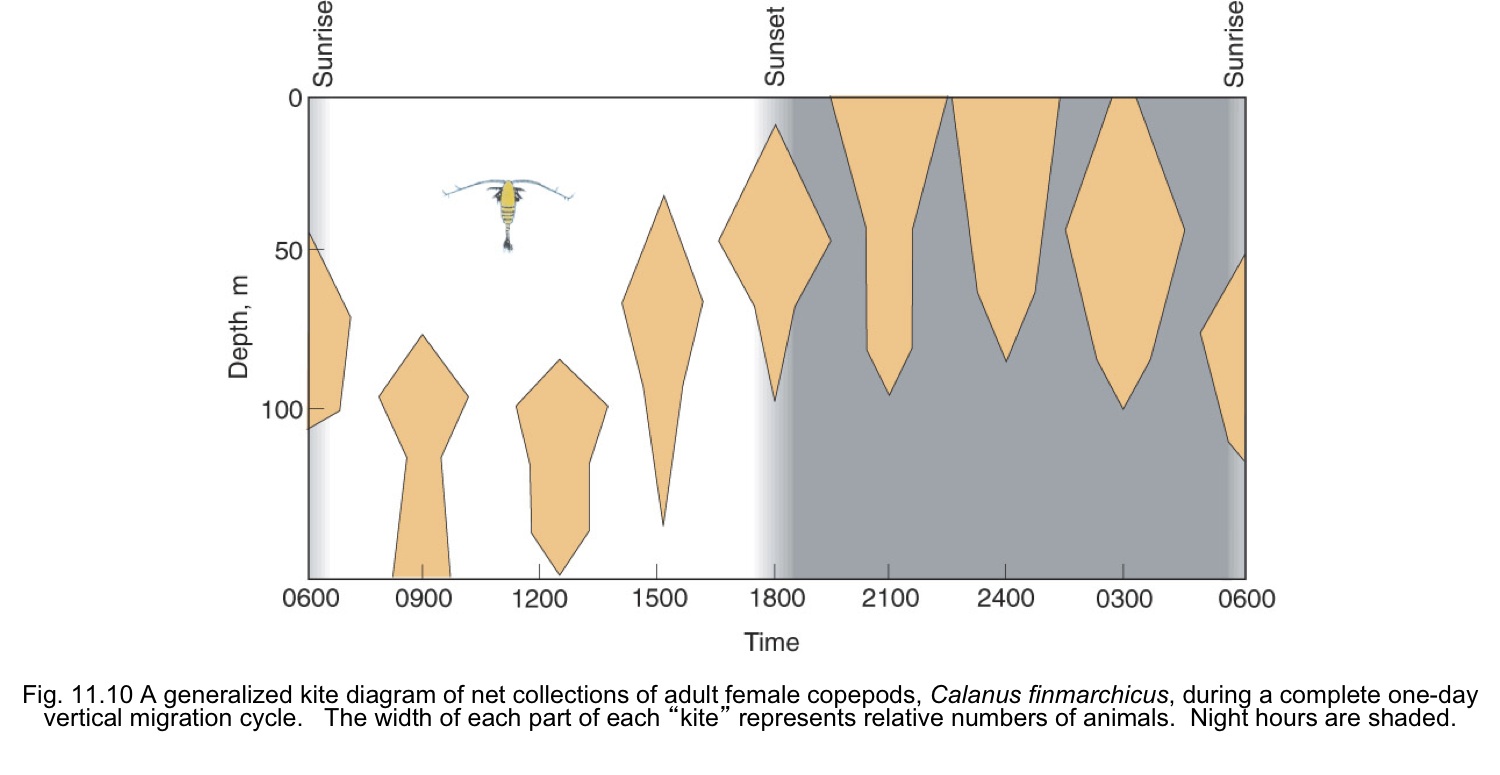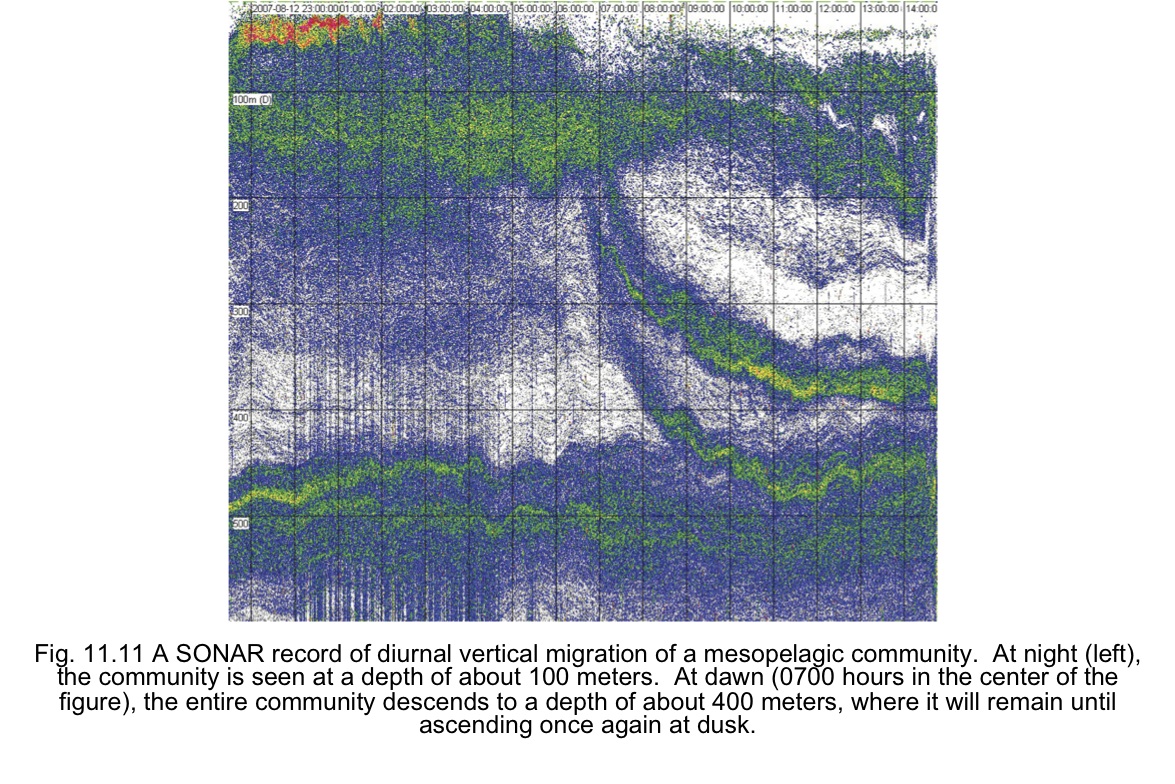Water's ability to absorb heat and transmit light buffers many
marine habitats from extreme environmental conditions.
Still, certain habitats are characterized by extremes in
temperature, light, and pressure.
Deep sea habitats are characterized by low light, high
pressure (> 400 atmospheres), cold temperatures (1-4 °C),
little current, and fine (soft) sediments.
On a large scale, these habitats are extremely stable, with
little change in conditions for extended periods of time
Despite this stability, soft bottom habitats are
turned over regularly by burrowing and feeding behaviors,
creating local spatial heterogeneity.
Soft sediments will foul suspension feeders, so detritivores
dominate.
Echinoderms, mollusks, brachiopods, and fish are
common members of the community
Though nutrients are not limiting, the lack of light keeps
primary productivity low.
Organic material is in short supply and microbial activity
is low
Low microbial activity limits decomposition and
consumption of oxygen
High pressure, cold temperatures, or adaptations
to low resource availability may be responsible
Food is sparse, but uniformly distributed, so organisms are
often spread out.
Adaptations include the ability to consume large
prey, when encountered.
Many deep sea marine organisms are simultaneous
hermaphrodites because the probability of encountering a
conspecific is low.
Deep sea vents represent an oasis of biological diversity in the
otherwise uniform benthos
Two kinds of vents:
"Hot smokers" often release sulfide compounds
Common in volcanically active regions such as the
Pacific and the mid-Atlantic ridge
Cold seeps often release methane (best known are off the
continental slope near Florida).
These vents often support unique communities of marine
organisms, including large limpets, clams, mussels and 3 m long
worms!
Mutualism between chemosynthetic bacteria and these benthic
organisms permits this biodiversity
In most cases, bacteria oxidize sulfide released from
the vents, providing high levels of primary productivity
Adaptations for exploiting the energy of these bacteria
include
Spongy tissues or organs (trophosome) that contain
high concentrations of bacteria (some lack a real gut)
Gills that can hold bacteria
Specialized hemoglobin that can bind and transport
sulfide to bacteria laden tissues.
Despite their patchy occurrence in the deep sea, larval
dispersal appears to be common and widespread
Microbial symbiosis also appears to be important in other, less
common, communities including decaying wood (contains
nitrogen-fixing bacteria) and oil-rich sediments (hydrocarbon
consuming bacteria).
Several species of "gulper eel" occur in the deep sea. They are characterized by a
huge mouth that allows it to ingest large quantites of water, from which it can capture prey of many different sizes. Some, like Saccopharynx harrisoni, can reach a length of at least four feet
with a whip-like tail with a light at the tip... these may eat larger prey, though stomach contents suggest many gulper eels consume smaller food items like shrimp. This mode of feeding may be especially important for smaller species like the pelican eel, Eurypharynx pelecanoides,

The deep sea squid, Heteroteuthis dispar, is a
three-inch long deep sea squid that can expel a bioluminescent ink
to confuse predators.
The vampire "squid", Vampyroteuthis infernalis, has ten
arms but is neither squid nor octopus. Two of its arms are sensory
filaments that withdraw into pockets. This organism has the
largest eyes relative to body size. Click
here to see what this thing looks like.
Deep sea anglerfish have bioluminescent lures to attract prey (and, possibly, mates). Males are parasitic... attaching themeselves to females.
The mesopelagic zone runs from the bottom of the epipelagic (photic) zone to ~ 1000 meters
animals here live in very dim light and depend on "marine snow", the organic material slowly sinking from the photic zone.
Mesopelagic fishes seldom exceed 10 cm in length, and many are equipped with well-developed teeth, large mouths, highly sensitive eyes, and photophores

Below the mesopelagic zone, light comes largely from photophores
lures for prey
species-recognition
possibly even as "lanterns"
Vertical migrations tie the upper zones together
Remember... temperature, light intensity, and food availability all decrease markedly with depth.
There is evidence that life forms move up and down with changes in these variables: DSSLs (deep sound-scattering layers).

DSSLs are mostly euphusiids, lanternfishes, and siphonophores

Think about life where everything is dispersed: Encounter rates (with predators, prey, and mates) are generally low
So... have a big appetite
Be a hermaphrodite
Concentrations of life do occur and can be maintained until prey are consumed. Any piece of flotsam may generate enormous aggregations.
Cruising is an important lifestyle for larger members of the open ocean such as fish (e.g., tuna, marlin, sailfish), mammals (dolphins, whales), and birds (albatrosses, petrels).



